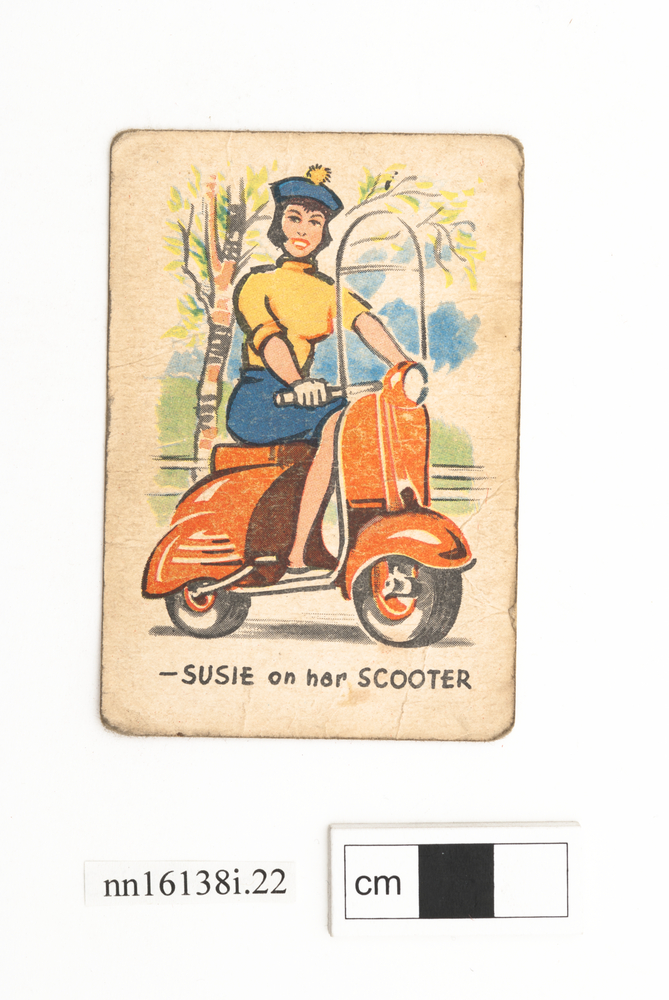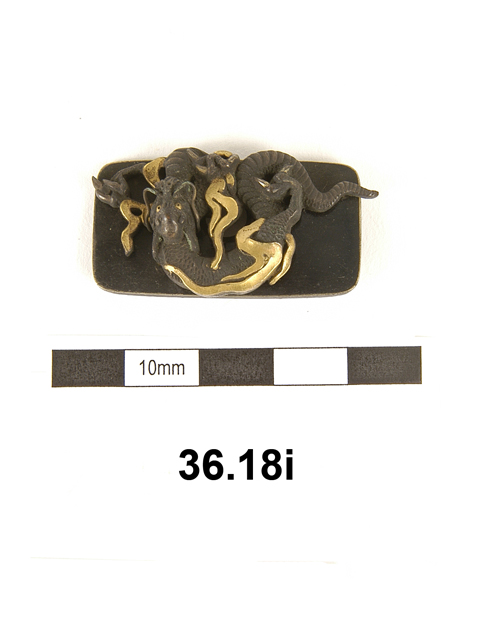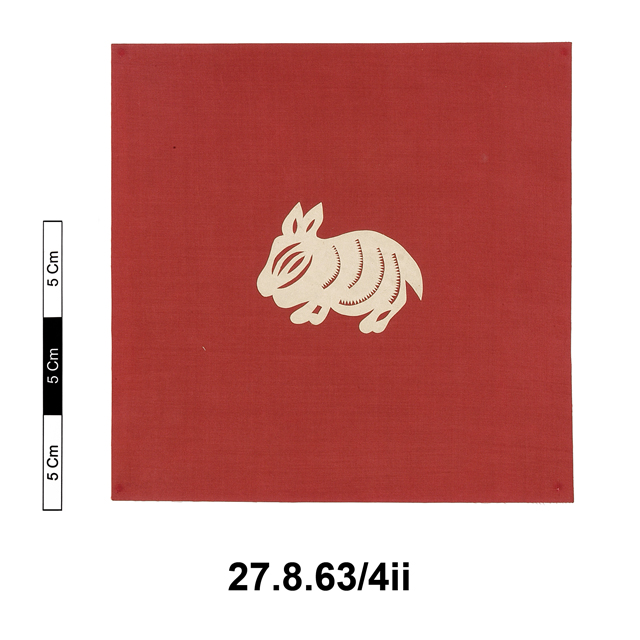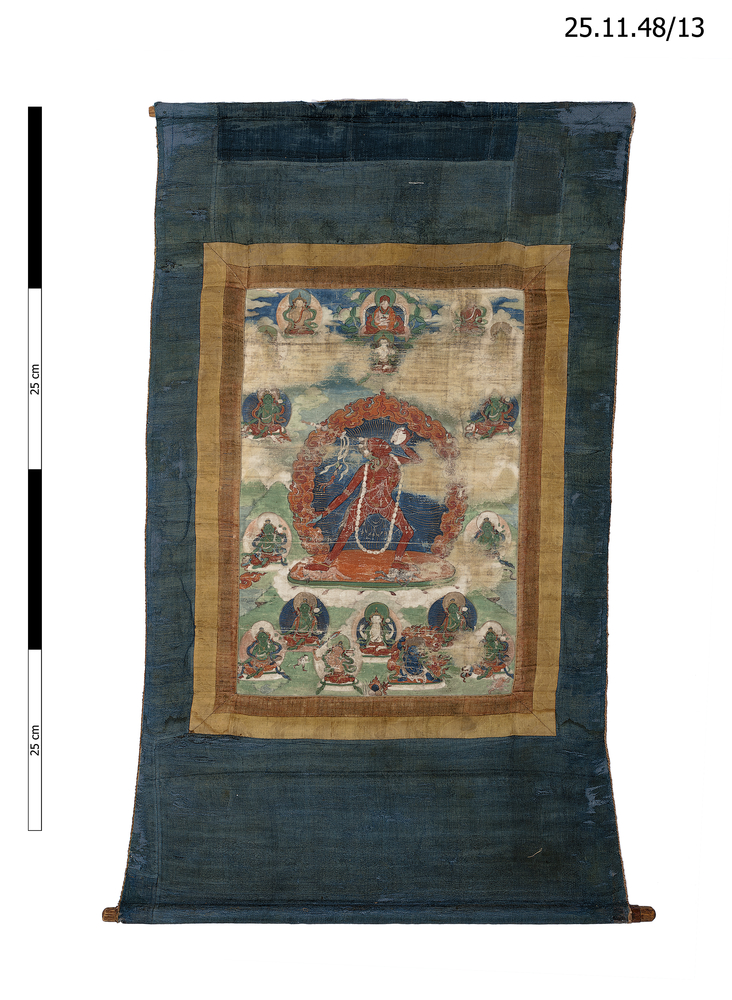
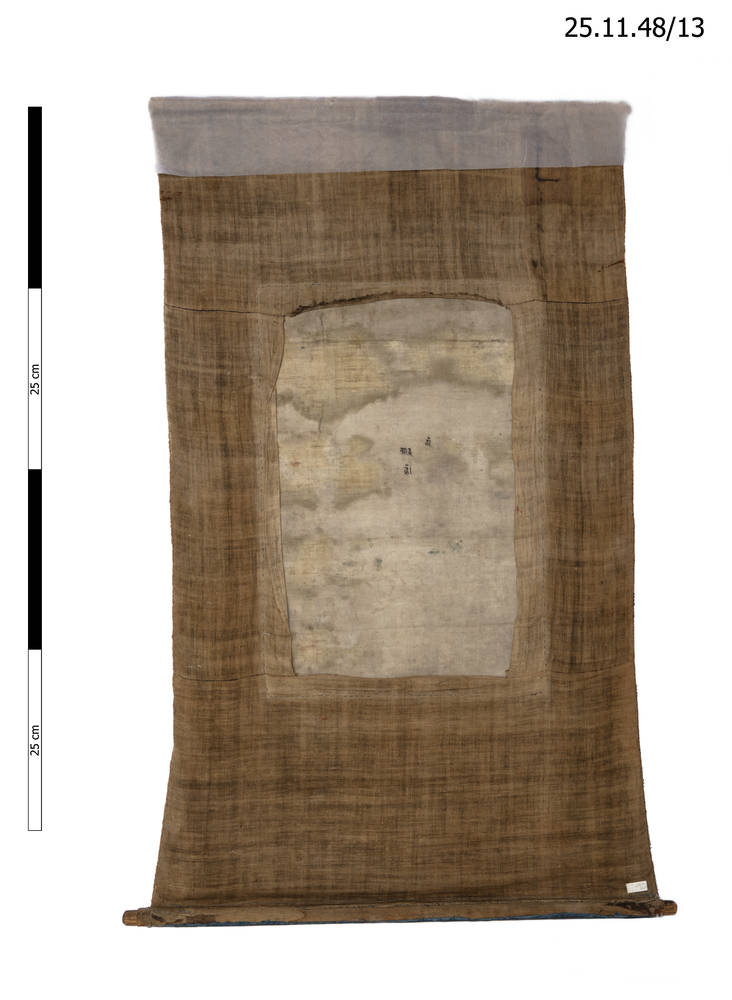
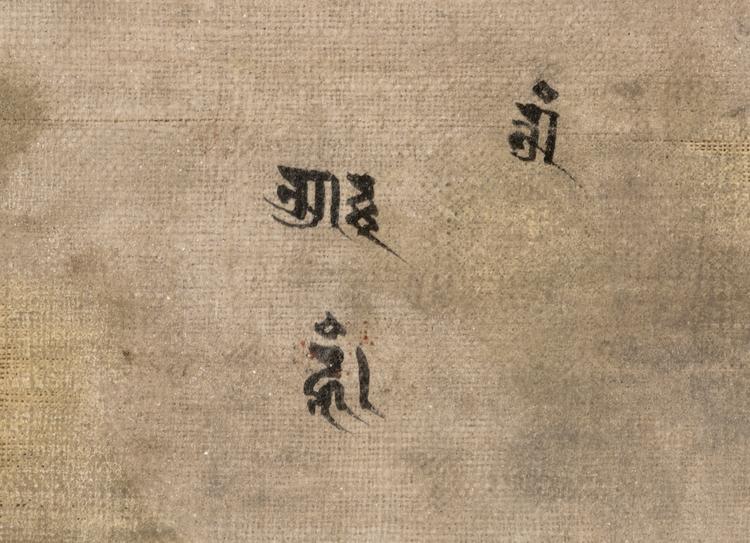
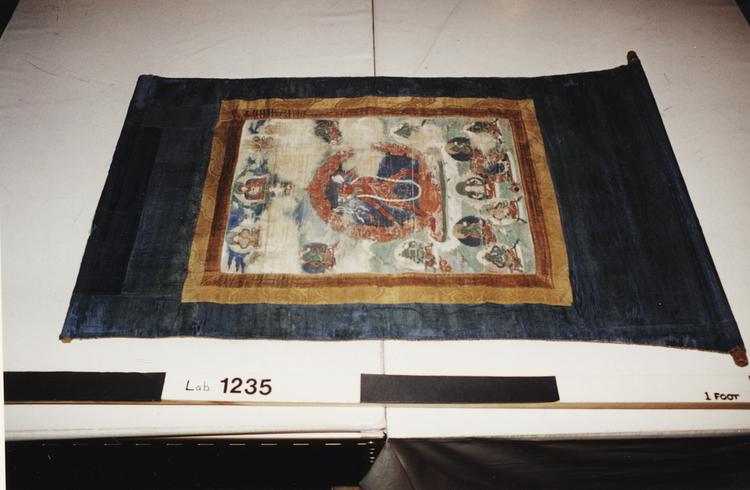
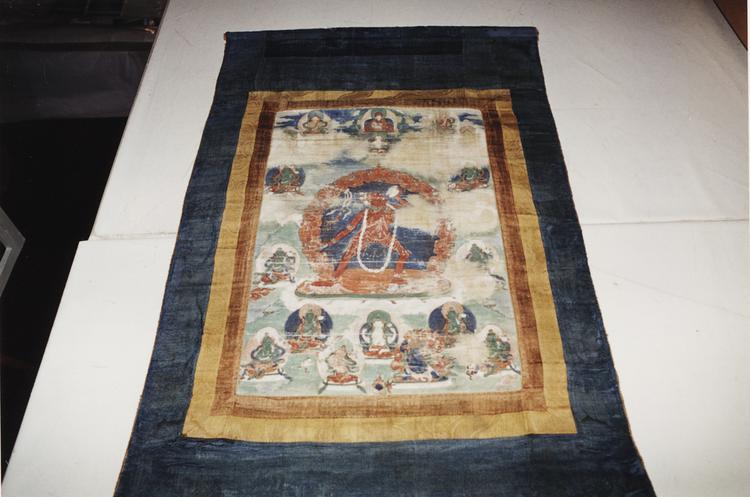
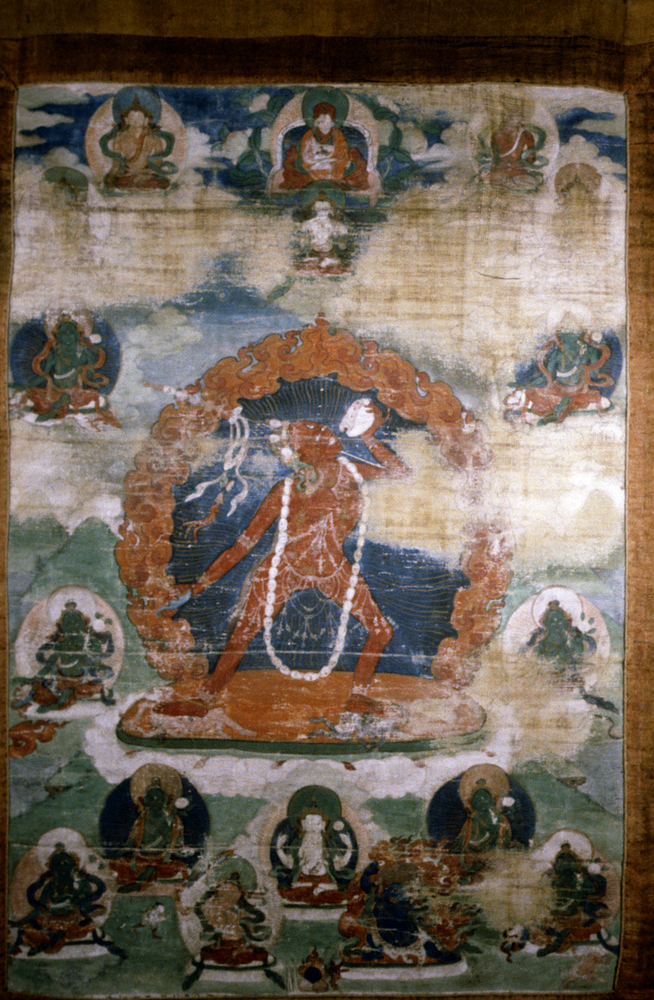
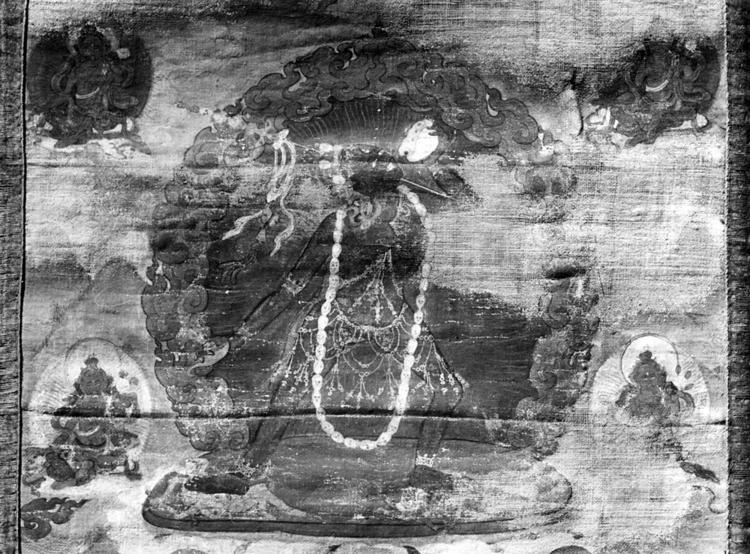
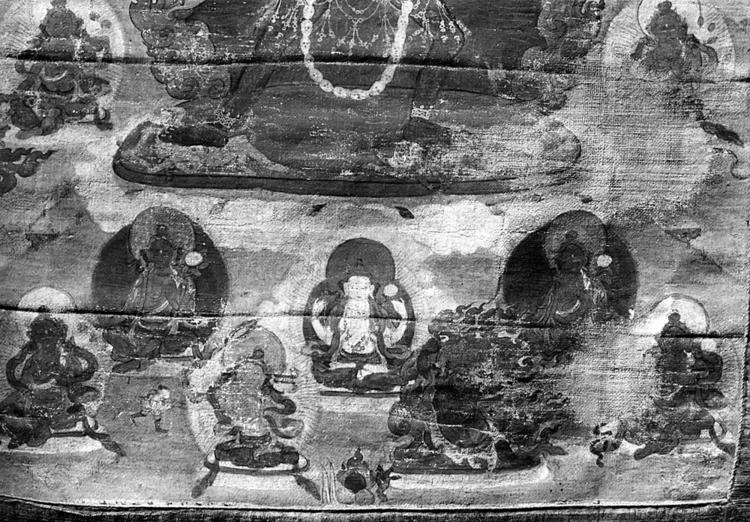
Thangka depicting Vajrayogini with eight Green Taras. At the top there are two Bodhisattvas flanking a Red-Hat Lama with Maitreya below. The figures of Avalokiteshvara, Manjushri and Vajrapani in the bottom centre. Two figures in upper register have been lost through damage and age. Inscription (blessing?) on reverse.
For a thangka to be effective it first must be consecrated. Typically this involves inscribing the reverse of the painting with the mantra OM AH HUNG, or Body, Speech, Mind. These syllables are written on the thangka by a Rinpoche -a reincarnated Buddha, returned to help others reach enlightenment- or a high lama. The location of the syllables corresponds to the deity depicted on the thangka: body is marked on the other side of the canvas to the forehead, speech, the throat and mind, the heart. Through this process of consecration (or rapney in Tibetan) the image on the thangka becomes the deity it depicts.



